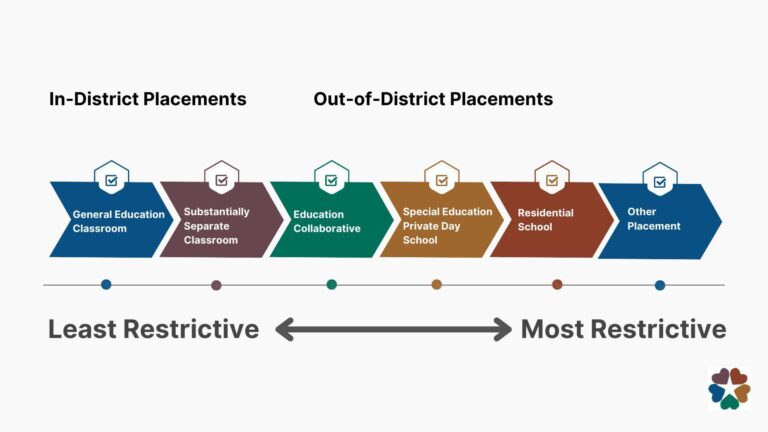County school districts across San Diego are grappling with escalating expenses tied to special education programs, placing significant strain on already tight budgets. As the demand for specialized services grows, districts are facing difficult decisions to meet state mandates while managing financial constraints. This challenge underscores the broader issue of funding inadequacies in public education, raising concerns among educators, parents, and policymakers about the future accessibility and quality of services for students with disabilities.
Rising Expenses Challenge County School Budgets for Special Education
In recent years, local education authorities have grappled with ballooning special education costs, putting significant pressure on already stretched budgets. Specialized services, including one-on-one aides, tailored learning programs, and cutting-edge assistive technologies, are essential for supporting students with diverse learning needs. However, these critical resources come with a steep price, forcing districts to reallocate funds and, in some cases, curtail other programs.
Key factors contributing to the cost surge include:
- Increasing number of students identified with disabilities
- Rising salaries and training needs for specialized staff
- Enhanced compliance requirements under state and federal regulations
- Expansion of technology-based instructional tools
| Expense Category | 2022-23 Budget | 2023-24 Projection |
|---|---|---|
| Specialized Staff Salaries | $12.5M | $14.3M |
| Assistive Technology | $3.8M | $5.1M |
| Training & Development | $1.4M | $1.9M |
| Compliance & Legal | $900K | $1.2M |
Impact on Students and Families Spurs Calls for Increased Funding
Families of students with special needs are facing increasing challenges as local school districts grapple with limited resources to provide adequate support. Many parents report longer wait times for evaluations and reduced access to specialized programs, leaving children without the tailored assistance they require to thrive academically and socially. These hardships are compounded by growing concerns over mental health services and the availability of trained professionals who can address diverse learning needs. Families emphasize that the gap between the district budgets and the actual costs of these essential services creates daily obstacles for their children’s educational progress.
Advocates and educators alike are urging policymakers to prioritize additional funding to better meet the needs of this vulnerable student population. They point to data demonstrating how investing in specialized education yields benefits beyond the classroom, such as improved long-term outcomes and reduced strain on community resources. The table below summarizes key areas where increased funding could have the most impact:
| Funding Area | Potential Impact |
|---|---|
| Early Intervention Programs | Enhanced developmental support, reducing future learning gaps |
| Specialized Staff Training | Better-equipped educators to meet individualized learning plans |
| Therapeutic Services | Improved access to speech, occupational, and mental health therapies |
| Assistive Technology | Greater engagement and accessibility for students with disabilities |
Clearly, stakeholders believe bolstering financial support is not just a budgetary issue, but a necessary investment in equity and opportunity for all students. As budget talks continue, families wait anxiously for commitments that align with the growing needs of their children.
Innovative Strategies Schools Employ to Manage Soaring Costs
Faced with escalating expenditures, many county school districts are adopting cutting-edge solutions to manage the financial strain of special education programs. Schools are increasingly partnering with local agencies and nonprofits to share resources and expertise, reducing redundant costs. Additionally, technology integration is playing a pivotal role — from virtual therapies to AI-driven individualized learning plans, these innovations streamline support services while maintaining quality care. Districts are also revisiting staffing models, employing a mix of full-time specialists and part-time consultants to maximize budget efficiency.
Creative budgeting strategies extend beyond staffing and technology. Many districts have introduced multi-tiered intervention systems that prioritize early identification and prevention, which helps reduce the need for more intensive and expensive accommodations later. Collaborative grants and targeted fundraising efforts specifically aimed at special education are also gaining traction. The table below highlights key strategies along with their impact on cost containment and educational outcomes:
| Strategy | Cost Impact | Benefits |
|---|---|---|
| Community partnerships | Medium Savings | Shared expertise/resources |
| Technology-driven support | High Savings | Improved personalization & access |
| Flexible staffing models | Moderate Savings | Efficient use of specialists |
| Early intervention programs | Long-term Savings | Reduced intensive needs |
| Specialized fundraising/grants | Variable Impact | Supplemented budgets |
Experts Advocate Policy Reforms to Support Special Education Programs
Education professionals and advocates are calling for comprehensive policy changes to alleviate the financial burden on local districts. They assert that current funding mechanisms do not fully account for the specialized resources required by students with disabilities. Among the proposed reforms are:
- Increased state and federal funding: Directing more resources toward individualized support and assistive technologies.
- Flexible budgeting: Allowing districts to allocate funds according to specific student needs rather than rigid categorical formulas.
- Streamlined regulatory requirements: Reducing administrative obstacles to enable faster deployment of essential services.
Experts emphasize the need for a sustained commitment to equity in education by addressing funding disparities. The following table outlines a comparison of current funding allocations versus recommended levels to meet rising demands:
| Funding Category | Current Allocation | Recommended Allocation |
|---|---|---|
| Per-Pupil Expenditure | $15,000 | $22,500 |
| Assistive Technology | $1,200 | $3,500 |
| Specialized Staff Support | $5,000 | $8,000 |
In Summary
As county school districts continue to navigate the escalating costs of special education, the challenge remains a pressing concern for educators, families, and policymakers alike. With budgets stretched thin and demand for specialized services growing, finding sustainable solutions will be critical to ensuring that all students receive the support they need. The San Diego Union-Tribune will continue to monitor this evolving issue as districts seek ways to balance fiscal responsibility with educational equity.







